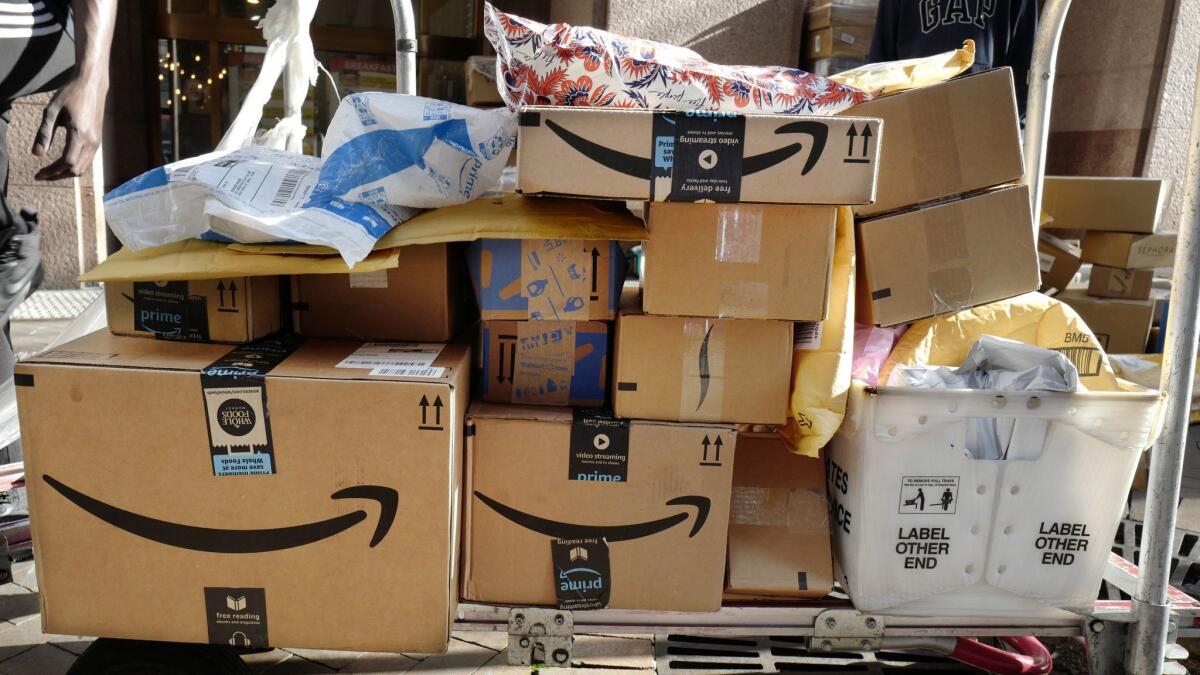Why Amazon Prime membership growth might be waning

Growth in Amazon Prime memberships — the main engine behind the retailer’s online dominance — may be starting to ease off the gas.
That’s according to new research by Consumer Intelligence Research Partners, or CIRP, suggesting that in the last year, Prime memberships grew 8% — the lowest annual rate since the group began tracking the data in 2012. The group also put the number of U.S. Prime members — a figure Amazon.com Inc. has famously kept under wraps — at 97 million, with Prime shoppers spending an average of roughly $1,400 a year, compared with $600 a year for non-member shoppers.
The numbers offer insight into what one analyst dubbed “as opaque a company as I’ve ever covered.” But they also raise questions about how Amazon might revamp or reimagine Prime when there are fewer and fewer people left to reach.
“It’s not a surprise that the member count is nearing saturation in the U.S.,” said Josh Lowitz, partner and co-founder of CIRP. “Arguably it’s a victory that Amazon got there so fast.”
That leaves what Lowitz calls the magic question: What will Amazon do next?
Amazon did not respond to a request for comment on CIRP’s report. (Amazon’s founder, Jeff Bezos, also owns the Washington Post.)
Lowitz said that since Prime’s inception in 2005, Amazon has focused on making the service “compelling” to customers, with features including two-day shipping, streaming video services and promotions such as Prime Day. But as it reaches saturation, Amazon must rely on making more money from its existing Prime members. That might include getting members to listen to their favorite podcasts on an Echo Dot, or a slew of other measures to bring Amazon services and products into daily life.
In time, Lowitz said, that approach could position Amazon to “become the pharmacy of choice, the travel agent of choice.”
“We think a Prime member is more likely to say, ‘Maybe I like my dress shirts from Amazon,’ because of that trusting relationship,” Lowitz said.
(CIRP draws its figures from quarterly surveys of 500 Amazon shoppers. Prime estimates are drawn from the surveys as well as Amazon financial information.)
In April, Bezos announced that paid Prime membership had exceeded 100 million worldwide. Bezos unveiled the figure in his annual shareholder letter — published since 1997 and widely considered a must-read among executives and business leaders around the globe — and noted that in 2017, Prime gained more new members than in any previous year. By comparison, Netflix at the time had 125 million subscribers.
Estimates on Prime memberships have been the subject of much speculation, especially because the numbers also serve as a metric for Amazon’s revenue stream. The math can be difficult to parse: It’s not quite as simple as multiplying the cost of a $119 annual membership by 100 million. Some members — students, for example — have options to pay less, while others pay more for a month-by-month subscription.
Prime approaching a saturation point may be inevitable, but that doesn’t mean memberships should be described as “flattening out,” said Charlie O’Shea, lead retail analyst for Moody’s. O’Shea noted that, hypothetically, it’s possible for a company to grow at 10%, then slip to 9% and still be adding more members in absolute numbers.
“Is it flattening?” O’Shea said. “Well, trees don’t grow to the sky. So at some point it has to flatten out. Are we there yet?”
Either way, Amazon will have to prepare. Mark Rosenbaum, department chair and professor of retailing at the University of South Carolina, said international markets will be key in helping Amazon clinch massive bases beyond the United States.
But Prime’s ease and accessibility rely on advanced and extensive mail systems that don’t exist everywhere in the world, Rosenbaum said. One solution may be for Amazon to work with retailers and vendors overseas, such as at 7-Eleven, where customers can pick up their packages. Prime has programs through Whole Foods that allow shoppers to pick up their groceries, for example.
“But how does that work in Bogotá, Colombia?” Rosenbaum said. “How would that work in Mexico City?”
Siegel writes for the Washington Post.






